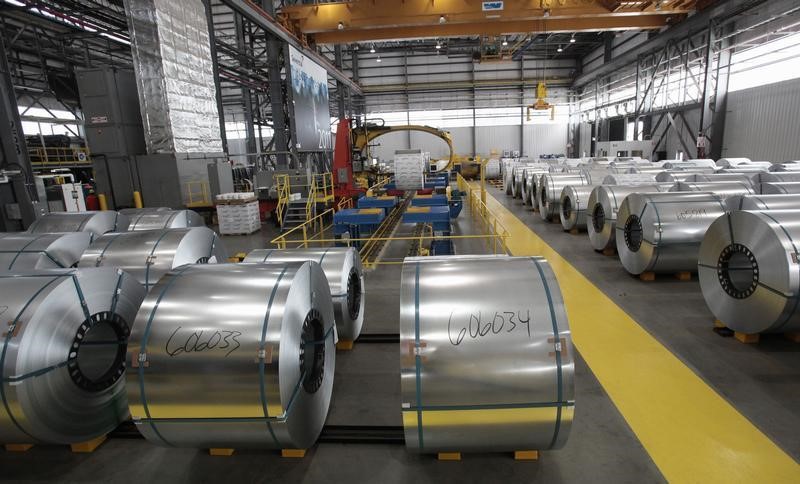By Lucia Mutikani
WASHINGTON (Reuters) - U.S. producer prices in December recorded their biggest fall in more than three years on tumbling energy costs while underlying inflation pressures were tame, a cautionary note for the Federal Reserve as it ponders its next step on monetary policy.
The Labor Department said on Thursday its producer price index for final demand declined 0.3 percent, the biggest drop since October 2011, after falling 0.2 percent in November.
"That makes the Fed's job more difficult," said Gus Faucher, senior economist at PNC Financial Services Group in Pittsburgh. "We expect inflation to slow ... the Fed needs to be more cautious about raising interest rates."
In the 12 months through December, prices at the factory gate increased 1.1 percent, the smallest gain since November 2013, after rising 1.4 percent in November.
A broader measure of underlying producer inflation pressures that excludes food, energy and trade services edged up 0.1 percent after being flat in November.
Fed officials have largely viewed the energy-driven weakness in inflation as transitory. But with retail sales and average hourly earnings, another key inflation measure, falling in December, that could give pause to some policymakers.
The U.S. central bank has kept its short-term interest rate near zero since December 2008. A Reuters survey published on Thursday showed nearly two-thirds of the 82 economists polled expected the first interest rate hike by June.
While interest rate futures have pushed bets into the second half of this year, they continue to point to the first increase occurring in October.
Inflation is running below the Fed's 2 percent target. Consumer inflation data on Friday is expected to show price pressures remaining muted in December.
SEASONAL QUIRKS
In a second report, the Labor Department said initial claims for state unemployment benefits rose by 19,000 to a seasonally adjusted 316,000 for the week ended Jan. 10.
Economists, who had forecast claims falling to 291,000 last week, said the data had been distorted by difficulties adjusting it for seasonal fluctuations. Seasonal quirks also have been blamed for the weak retail sales and wage growth in December.
"Seasonal adjustments become particularly difficult around year-end. We expect claims to resume their downward trend in the coming weeks and reflect broader improvement in labour markets," said Jesse Hurwitz, an economist at Barclays in New York.
The four-week moving average of claims, considered a better measure of labour market trends as it irons out week-to-week volatility, remained below 300,000, a level associated with a strengthening labour market, for an 18th straight week.
Other reports showed mixed fortunes for manufacturing in New York state and the mid-Atlantic region in January.
Economists said this was broadly in line with some cooling in factory activity in response to slowing global demand and a strong dollar.
Prices for U.S. Treasury debt rose on the data, with the yield on the benchmark 10-year bond falling to a 20-month low.
The dollar rallied to an 11-year high against the euro after the Swiss National Bank abandoned a three-year-old cap against the single currency. U.S. stocks fell in choppy trade.
Wholesale energy prices dropped a record 6.6 percent in December, declining for a sixth straight month, reflecting falling crude oil prices against the backdrop of weakening global demand and more shale production in the United States.
A strong dollar, as the domestic economy outperforms its global peers, is also helping to curb inflation.
International Monetary Fund Managing Director Christine Lagarde said on Thursday weak oil prices were unlikely to boost the global economy.

Concerns about global growth have also undercut copper prices. On Thursday, copper rose on a mix of bargain-hunting, short-covering and hedging by consumers, a day after its biggest slide in more than three years, but more losses were expected.